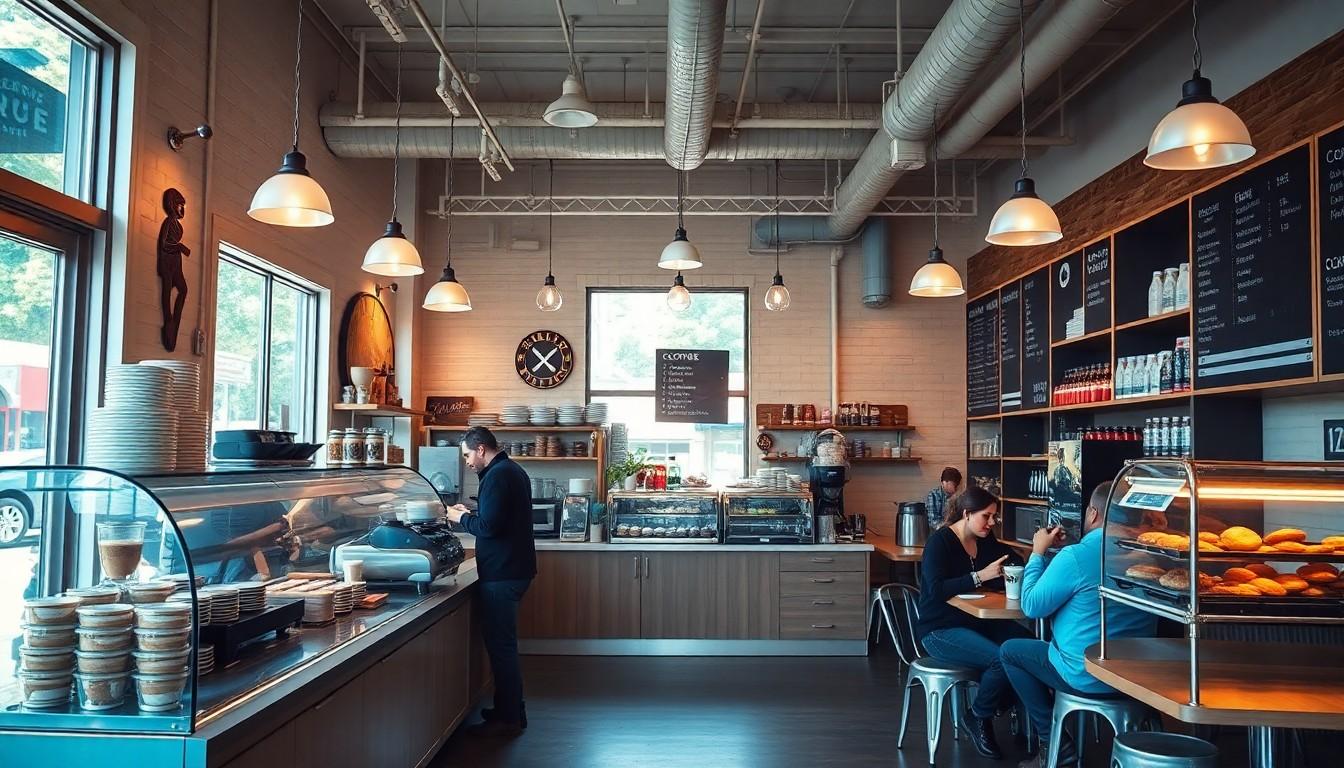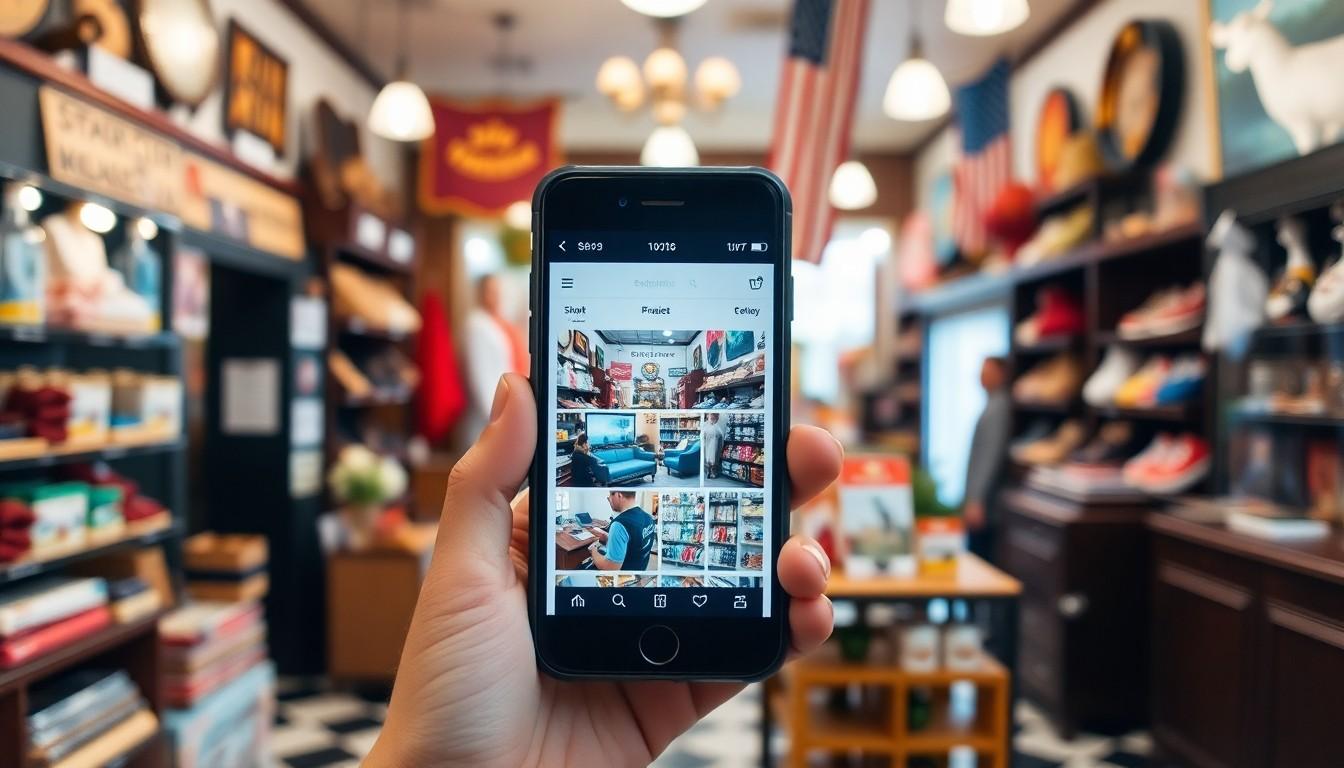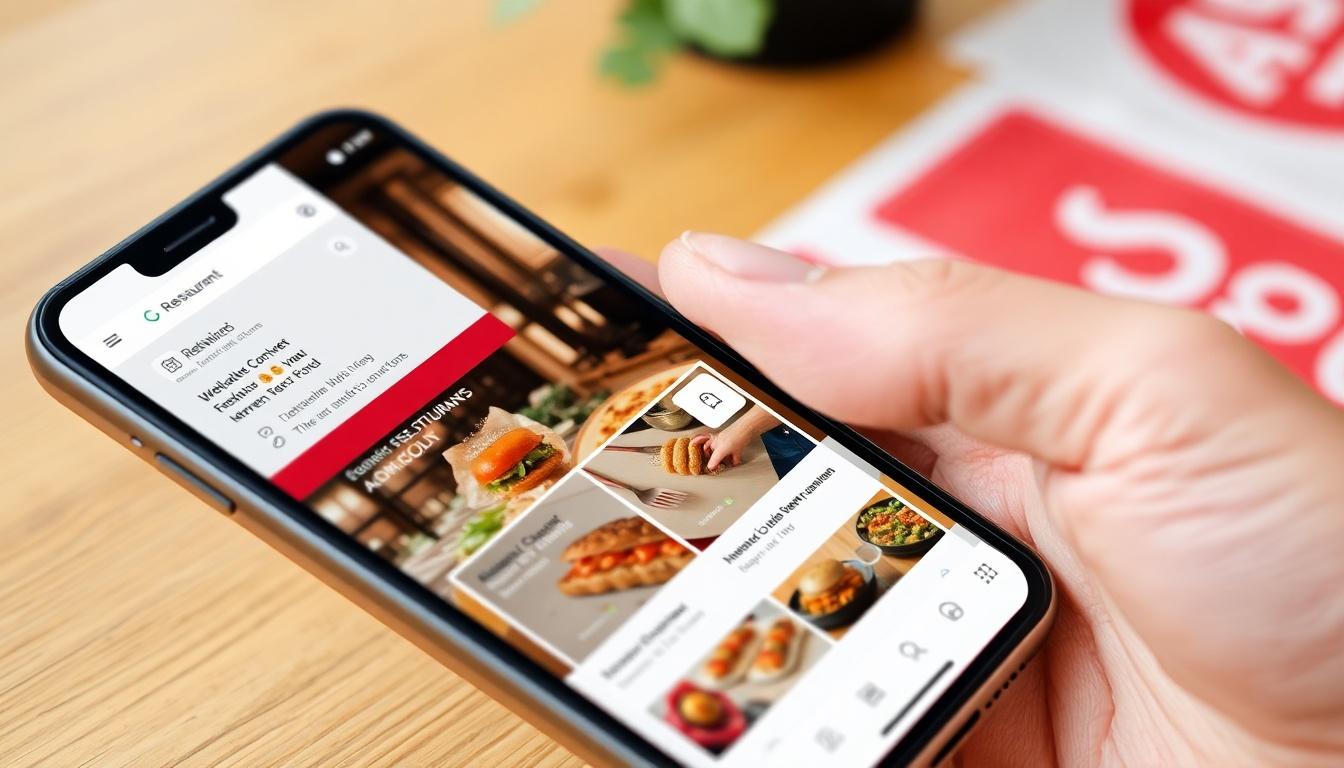These days, brick and mortar stores often struggle to attract local customers despite having excellent products and services. While 97% of consumers search online for local businesses, many physical stores remain virtually invisible to potential customers in their own neighborhoods.
Local SEO tips for brick and mortar stores can transform this challenging situation. By implementing targeted strategies like optimizing Google Business Profiles, building location-specific landing pages, and generating authentic customer reviews, physical retailers can significantly increase their visibility to nearby shoppers. These proven techniques help bridge the gap between online searches and in-store visits.
This guide explores essential local SEO tips for brick and mortar stores that physical stores can implement immediately to boost foot traffic, increase sales, and compete effectively against both online giants and neighboring businesses.
Why Local SEO Matters for Brick and Mortar Stores
Local SEO transforms how physical stores connect with nearby customers who are actively searching for products and services. When implemented effectively, local SEO strategies drive qualified traffic directly to your doorstep.
For brick and mortar retailers, visibility in local search results isn’t optional—it’s essential for survival in today’s digital-first shopping environment. A comprehensive website SEO audit identifies opportunities to enhance your local search presence and address competitive gaps. Properly optimized local listings ensure your business appears in relevant “near me” searches, which have grown exponentially over recent years.
The Google Business Profile serves as the cornerstone of local SEO success. A complete Google Business Profile setup with accurate business hours, precise location data, and engaging photos creates a virtual storefront that encourages in-person visits. This profile directly influences your visibility in Google’s Local Pack, where the most prominent local businesses are featured above standard search results.
Local SEO delivers targeted visibility among consumers who are ready to make purchasing decisions. Unlike broader marketing initiatives, on-site SEO optimization specifically targets customers in your geographic area who demonstrate high purchase intent. This focused approach generates higher conversion rates and more efficient marketing spend for physical retailers competing in crowded marketplaces.
Optimizing Your Google Business Profile

Your Google Business Profile serves as a digital storefront that influences how customers find your brick-and-mortar location. This free listing plays a crucial role in local SEO success, appearing in both Google Maps and local search results.
Claiming and Verifying Your Listing
Claiming your Google Business Profile establishes ownership over your business listing online. Start by logging into a Google Account, then search for your business name on Google or visit the Google Business dashboard. If your business already appears, select “Claim this business“ or “Own this business?“ to begin the verification process. Google offers multiple verification methods including phone, email, video recording, live video call, or postcard verification. The postcard option typically takes 5-10 days and contains a unique verification code. This critical first step in local SEO prevents competitors from controlling your online information and gives you authority to update your business details. A website SEO audit can identify if your GBP is properly configured and connected to your overall SEO strategy.
Maximizing Profile Completeness
A complete Google Business Profile significantly improves your local search visibility. Fill out every available field with accurate, detailed information including business name, address, phone number, website URL, and business categories. Upload high-quality photos showing your storefront, interior, products, and team members—businesses with photos receive 42% more direction requests. Add your operating hours, special holiday schedules, and attributes that highlight unique features like “women-owned“ or “wheelchair accessible.“ Create posts regularly to share promotions, events, and updates. Include secondary categories that accurately represent additional services you offer. The more comprehensive your profile, the better Google understands your business and matches it to relevant local searches.
Managing Customer Reviews
Customer reviews directly impact your local SEO performance and consumer trust. Implement a systematic approach to generating positive reviews by asking satisfied customers to share their experiences. Respond to all reviews—both positive and negative—within 24-48 hours using a personalized, professional tone. When addressing negative feedback, acknowledge concerns, apologize when appropriate, and offer solutions. For positive reviews, express genuine gratitude and emphasize key points mentioned. Monitor review platforms regularly, and consider using review management tools to streamline the process. Google’s algorithm considers review quantity, recency, and frequency when determining local search rankings, making consistent review generation essential for improved visibility in the competitive local search landscape.
Creating Location-Specific Website Content: Local SEO Tips for Brick and Mortar Stores

Location-specific website content forms the backbone of effective local SEO for brick-and-mortar stores. Content tailored to your local audience helps search engines understand your business’s relevance to specific geographic areas and increases visibility to nearby customers actively searching for your products or services.
Optimizing Title Tags and Meta Descriptions
Title tags and meta descriptions with geographic modifiers significantly boost local search visibility. Each page’s title tag should include your primary keyword plus location (e.g., “Premium Coffee Shop in Portland, OR“ rather than just “Coffee Shop”). Keep titles under 60 characters to prevent truncation in search results.
Meta descriptions require location-specific calls to action that entice local customers. Include your city, neighborhood, or region alongside value propositions unique to your brick-and-mortar location. For example, “Visit our Boston bookstore for the largest selection of mystery novels in New England—walking distance from Park Street Station.“ This location-specific metadata sends clear signals to search engines about your service area and improves click-through rates from local searchers.
Building Location Pages
Location pages serve as dedicated landing pages for each physical store location your business operates. Each location page must contain unique content rather than duplicated information with only the address changed. Optimize these pages with:
- Store-specific details including address, phone number, and operating hours
- Embedded Google Maps showing exact store location
- Unique descriptions of products or services specific to that location
- Local team member introductions or location history
- Nearby landmarks or parking information
- Location-specific promotions or events
These pages function as conversion tools for customers searching for your business in specific areas. A website SEO audit often reveals opportunities to enhance these location pages with more detailed community connections and neighborhood-specific content that demonstrates local expertise.
Adding Structured Data Markup
Structured data markup communicates critical location information to search engines in machine-readable format. Implementing LocalBusiness schema markup enables Google to understand and properly display your business details in search results. This coding includes:
- NAP (name, address, phone) information
- Geographic coordinates
- Hours of operation
- Accepted payment methods
- Price range indicators
Schema markup also allows specification of multiple departments within larger stores and connections between various locations of the same business. This technical SEO element significantly improves how search engines interpret your location data, potentially triggering enhanced listings with rich snippets displaying your store hours, reviews, and location directly in search results. On-site SEO optimization should prioritize this implementation for maximum local search visibility.
Local Link Building Strategies
Local link building forms the cornerstone of effective local SEO for brick-and-mortar stores. Strong backlinks from relevant local sources signal to search engines that your business is an established and trusted presence in your community, directly boosting your visibility in local search results.

Partnering With Local Businesses
Strategic partnerships with complementary local businesses create powerful mutual benefits for local SEO. Identify businesses that share your target audience but don’t compete directly—a bakery might partner with a coffee shop, or a hardware store with a home cleaning service. These relationships generate authentic backlink opportunities through:
- Cross-promotional content on each other’s blogs or websites
- Joint local events with shared promotional materials
- Co-branded local guides featuring both businesses
- Testimonials or case studies highlighting your relationship
Effective partnerships extend beyond simple link exchanges. Create genuine value through collaborative contests, bundled service offerings, or community initiatives that naturally generate publicity. These activities produce contextually relevant backlinks while strengthening your standing in the community, enhancing both your search rankings and local reputation.
Getting Listed in Local Directories
Local directory listings provide essential citations that validate your business’s existence and location to search engines. Focus on quality over quantity by securing listings in:
- Industry-specific directories relevant to your business category
- Chamber of Commerce and local business association websites
- Regional tourism sites and visitor guides
- Neighborhood or community hub websites
When creating these listings, maintain absolutely consistent NAP (Name, Address, Phone) information across all platforms. Inconsistencies confuse search engines and dilute your local SEO impact. Prioritize directories with high domain authority and local relevance over generic listing sites.
Beyond basic listings, many local directories offer enhanced profiles with photos, business descriptions, and customer reviews. Complete these thoroughly with keyword-rich descriptions and high-quality images to maximize their SEO value. A comprehensive website SEO audit can identify which directories are most valuable for your specific location and industry, ensuring your listing strategy focuses on platforms that deliver genuine local search benefits.
Leveraging Social Media for Local Visibility
Social media platforms offer powerful channels for brick-and-mortar stores to enhance their local SEO presence. These platforms serve as valuable touchpoints that connect physical businesses with nearby customers, creating opportunities for improved local search rankings and increased foot traffic.
Geo-Tagging Your Posts
Geo-tagging transforms ordinary social media content into location-specific assets that boost local SEO performance. When you add location data to posts, you create geographical relevance that search engines recognize and reward with improved local visibility. Facebook, Instagram, and Twitter all offer built-in location tagging features that add coordinates to your content, making posts discoverable in location-based searches. Businesses implementing consistent geo-tagging report up to 79% higher engagement rates on location-tagged posts compared to non-tagged content. For maximum impact, geo-tag all store promotions, product highlights, and event announcements. A comprehensive website SEO audit can identify opportunities to align your social geo-tagging strategy with other local SEO efforts.
Encouraging Customer Check-Ins
Customer check-ins function as powerful social proof signals that validate your physical location to search engines. Each check-in creates a location-specific mention that strengthens your local search presence. Create incentives such as exclusive discounts, loyalty points, or weekly contests that reward customers who check in at your store. Install prominent signage with QR codes that simplify the check-in process, placing these at entrances, checkout counters, and dressing rooms. Businesses implementing check-in programs see an average 31% increase in repeat visits from participating customers. Feature check-ins on your social feeds by resharing and acknowledging customers who tag your location. This practice not only enhances your Google Business Profile visibility but creates a virtuous cycle of increased check-ins, reviews, and local engagement that continuously reinforces your local SEO standing.
Mobile Optimization for Local Searches: Local SEO Tips for Brick and Mortar Stores

Mobile optimization forms the backbone of successful local SEO for brick-and-mortar retailers. With most local searches occurring on mobile devices, stores with mobile-friendly websites capture more foot traffic than competitors with desktop-only designs.
Responsive Website Design
Responsive design automatically adjusts your website layout across all devices—smartphones, tablets, and desktops. This approach eliminates pinching, zooming, and horizontal scrolling that frustrates mobile users and increases bounce rates. A professional website SEO audit identifies responsive design issues that may be hindering your local search performance and provides actionable recommendations for improvement.
Page Speed Optimization
Page speed directly impacts both search rankings and user experience. Mobile users abandon sites that take longer than three seconds to load. Optimize your mobile speed by:
- Compressing images without sacrificing quality
- Implementing browser caching
- Minimizing CSS and JavaScript files
- Removing unnecessary plugins and redirects
Local-Focused Mobile Content
Structure your mobile content for users actively searching while on-the-go. Place critical information—address, phone number, store hours—prominently at the top of mobile pages. Create thumb-friendly navigation with larger buttons and adequate spacing between clickable elements. Include click-to-call buttons that connect customers directly to your store with a single tap, dramatically increasing conversion rates from mobile searches.
Tracking and Measuring Local SEO Performance
Google Analytics Location Tracking
Google Analytics tracks visitor location data with remarkable precision. Set up geographic reporting to monitor traffic from specific neighborhoods and cities near your store. Filter this data to identify which local areas generate the most engaged visitors, highest conversion rates, and lowest bounce rates. Create custom segments for visitors within your service radius to assess how effectively your local SEO efforts reach nearby customers. Compare performance metrics between local and non-local traffic to refine targeting strategies for your brick-and-mortar location.
Local Search Ranking Monitoring
Track your position for key local search terms using specialized rank tracking tools. Focus on monitoring geographic-specific keywords that include your city, neighborhood, and “near me” variations. Document ranking fluctuations after implementing website SEO audit recommendations to measure their impact. Benchmark your positions against local competitors to identify competitive gaps and opportunities. Set up automated rank tracking for primary and secondary location terms to establish performance trends over time.
Google Business Profile Insights
Google Business Profile insights reveal critical local SEO performance metrics. Monitor profile views, website clicks, and direction requests to evaluate visibility and customer intent. Track phone call metrics to measure direct response from local searchers. Analyze the search queries that trigger your profile appearance to refine keyword targeting. Compare performance month-over-month to identify seasonal patterns and long-term improvement. Use these insights to justify continued investment in local SEO optimization efforts and make data-driven adjustments to your strategy.
Conversion Tracking for Local Traffic
Implement conversion tracking specifically for locally-sourced traffic. Create goals in Google Analytics for store locator page visits, directions requests, and local phone calls. Assign appropriate conversion values to each local action based on historical in-store conversion rates. Monitor micro-conversions like coupon downloads or local event registrations that indicate purchase intent. Cross-reference online conversion data with in-store sales using location-specific promotion codes to connect digital marketing efforts with physical results.
Conclusion
Local SEO tips for brick and mortar stores represent a vital investment for brick-and-mortar retailers looking to thrive in today’s digital marketplace. By implementing these strategies—optimizing Google Business Profiles, leveraging location-specific content, building local links, and embracing mobile optimization—physical stores can significantly increase their visibility to nearby customers actively ready to make purchases.
The digital landscape continues to evolve, but the fundamental goal remains connecting local businesses with local customers. Stores that commit to robust local SEO practices and integrate local seo tips for brick and mortar stores into their strategy will discover a powerful competitive advantage that drives foot traffic and boosts sales.
Remember that local SEO isn’t a one-time effort but an ongoing process requiring consistent attention and refinement based on performance metrics. The stores that excel at local search visibility today will be the thriving retail destinations of tomorrow.
Frequently Asked Questions
What is local SEO and why is it important for brick-and-mortar stores?
Local SEO is the process of optimizing your online presence to attract customers in your geographic area. It’s crucial for physical retailers because it helps them appear in local search results when nearby customers are actively looking for products or services. With 46% of all Google searches having local intent, effective local SEO drives qualified foot traffic to your store, improves visibility against competitors, and leads to higher conversion rates since you’re targeting consumers with high purchase intent.
How do I optimize my Google Business Profile for local search?
Start by claiming and verifying your Google Business Profile to establish ownership. Then complete your profile with accurate business information including hours, address, phone number, and business category. Add high-quality photos of your storefront, products, and interior. Regularly update with posts about promotions or events. Encourage and respond to customer reviews promptly. Keep all information current, as Google rewards active profiles with better visibility in the Local Pack.
What are location-specific landing pages and why do I need them?
Location-specific landing pages are dedicated website pages that focus on a particular geographic area your business serves. They help search engines understand your relevance to specific locations. These pages should include local keywords, your physical address, store-specific information, local testimonials, and nearby landmarks. For businesses with multiple locations, create unique pages for each store with distinct content to avoid duplicate content penalties and maximize local search visibility.
How important are customer reviews for local SEO?
Customer reviews are extremely important for local SEO. They build trust with potential customers, improve your visibility in local search results, and are a key ranking factor for Google’s Local Pack. Positive reviews can significantly influence purchasing decisions, with 88% of consumers trusting online reviews as much as personal recommendations. Implement a strategy to respectfully encourage satisfied customers to leave reviews and always respond professionally to both positive and negative feedback.
What is NAP consistency and why does it matter?
NAP stands for Name, Address, and Phone number. Consistency means these details must be identical across all online platforms where your business is listed. NAP consistency is crucial because it helps search engines verify your business’s legitimacy and location. Inconsistencies can confuse both search engines and potential customers, potentially harming your local search rankings. Regularly audit your business listings across directories, social media, and your website to ensure information remains consistent.
How can social media improve my local SEO?
Social media enhances local SEO by creating additional touchpoints for local customer engagement. Geo-tag your posts to increase geographical relevance and visibility to nearby users. Encourage customer check-ins at your location by offering incentives, as this validates your physical presence. Share local events and community involvement to strengthen local connections. While social signals aren’t direct ranking factors, the increased engagement and traffic from social media can positively impact your overall local search performance.
Is mobile optimization necessary for local SEO?
Absolutely. Nearly 60% of local searches occur on mobile devices, making mobile optimization essential for local SEO success. Ensure your website uses responsive design that adapts to different screen sizes. Optimize page loading speed—47% of consumers expect pages to load in 2 seconds or less. Structure your mobile content with easy-to-find information like address, hours, and contact details. Create thumb-friendly navigation and click-to-call buttons to improve conversion rates from mobile searches.
How can I track the effectiveness of my local SEO efforts?
Monitor performance through Google Analytics by tracking traffic from specific geographic areas. Use Google Search Console to identify which local keywords drive traffic to your site. Track your rankings for important local search terms over time. Analyze Google Business Profile insights to understand how customers find and interact with your listing. Connect online activity to in-store visits by implementing conversion tracking for store visits, phone calls, and direction requests to measure true ROI.
What are local citations and how do they affect my search visibility?
Local citations are mentions of your business on other websites, particularly in business directories. They validate your business existence and location to search engines, strengthening your local SEO. Focus on quality citations in relevant directories rather than quantity. Ensure NAP information is consistent across all citations. Industry-specific directories often carry more weight than general ones. Regular citation audits help identify and correct inconsistencies that could harm your search visibility.
How can I build local backlinks to improve my SEO?
Develop partnerships with complementary local businesses for cross-promotion opportunities. Sponsor community events or local sports teams to earn mentions on their websites. Create locally-relevant content that community websites might link to. Join your local chamber of commerce or business associations. Participate in local business awards programs. Guest post on local blogs or news sites. Quality local backlinks signal to search engines that your business is an established and trusted presence in the community.





